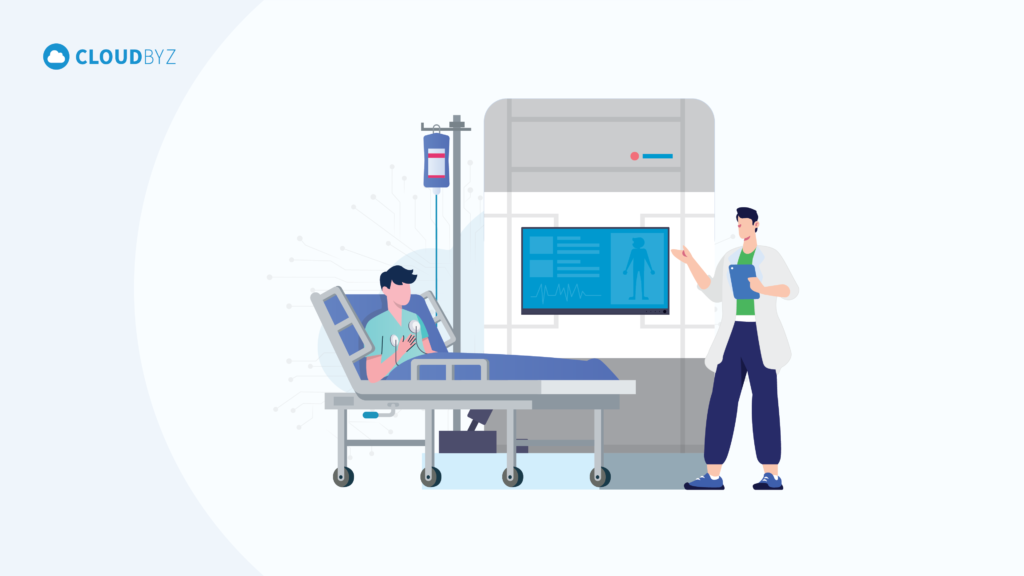
The landscape of modern medicine is rapidly evolving, driven by groundbreaking advancements in diagnostics. This revolution is enabling the growth of innovative biomarker-based precision medicine and cell and gene therapy, transforming both clinical research and post-market care. In this blog, we will explore how diagnostics play a pivotal role in these cutting-edge fields, enhancing patient outcomes, and accelerating the development of personalized treatments.
Understanding Biomarker-Based Precision Medicine
Biomarker-based precision medicine tailors medical treatment to the individual characteristics of each patient. Biomarkers are biological molecules found in blood, other body fluids, or tissues, indicating a normal or abnormal process or condition. In precision medicine, biomarkers are used to identify patients who will benefit from specific therapies, predict disease progression, and monitor treatment responses.
Role of Diagnostics in Precision Medicine:
- Identification of Biomarkers: Diagnostics technologies, such as next-generation sequencing (NGS) and mass spectrometry, are instrumental in identifying new biomarkers. These technologies provide insights into genetic, proteomic, and metabolomic profiles, enabling the discovery of biomarkers associated with diseases like cancer, cardiovascular diseases, and neurological disorders.
- Patient Stratification: Diagnostics enable the stratification of patients based on their biomarker profiles. This allows for the selection of patients who are most likely to respond to a particular therapy, optimizing treatment efficacy and minimizing adverse effects. For instance, in oncology, patients with specific genetic mutations (e.g., HER2-positive in breast cancer) can be treated with targeted therapies that specifically inhibit the mutated pathways.
- Monitoring Treatment Response: Regular diagnostic testing can monitor the effectiveness of treatments by measuring changes in biomarker levels. This real-time monitoring helps clinicians adjust therapies as needed, ensuring optimal patient outcomes. Liquid biopsies, for example, allow non-invasive monitoring of cancer progression and response to treatment by analyzing circulating tumor DNA (ctDNA) in blood samples.
Advancing Cell and Gene Therapy
Cell and gene therapies represent the frontier of medical innovation, offering potential cures for previously untreatable conditions. These therapies involve modifying a patient’s cells or genes to treat or prevent diseases, with the promise of long-lasting effects.
Role of Diagnostics in Cell and Gene Therapy:
- Patient Selection: Diagnostics are crucial in identifying patients who are suitable candidates for cell and gene therapies. Genetic testing can detect specific mutations or deficiencies that these therapies aim to correct. For example, patients with certain types of inherited retinal diseases can be selected for gene therapy that delivers a functional copy of the defective gene.
- Safety and Efficacy Assessment: Before administering cell and gene therapies, rigorous diagnostic testing ensures the safety and efficacy of the treatment. This includes assessing the genetic integrity of modified cells, evaluating the potential for immune reactions, and ensuring the accurate delivery of therapeutic genes to target tissues.
- Post-Treatment Monitoring: After treatment, diagnostics play a vital role in monitoring patients for potential side effects and long-term efficacy. This includes tracking the persistence and function of modified cells, detecting any adverse immune responses, and ensuring that the therapeutic effects are sustained over time. Advanced imaging techniques, flow cytometry, and molecular assays are commonly used for this purpose.
Diagnostics in Post-Market Care
Post-market care is an essential phase in the lifecycle of medical treatments, ensuring continued safety and effectiveness after regulatory approval. Diagnostics are integral to this phase, providing ongoing surveillance and supporting evidence-based clinical decisions.
Key Aspects of Diagnostics in Post-Market Care:
- Surveillance of Long-Term Effects: Continuous diagnostic testing helps in the early detection of any long-term adverse effects or complications arising from treatments. This is particularly important in cell and gene therapies, where the potential for delayed effects exists. Regular follow-ups with diagnostic tests ensure that any issues are identified and addressed promptly.
- Real-World Evidence Generation: Diagnostics contribute to the collection of real-world evidence (RWE), providing valuable data on how treatments perform in diverse patient populations outside the controlled environment of clinical trials. This information is critical for refining treatment protocols and improving patient outcomes.
- Personalized Post-Treatment Plans: Post-market diagnostics enable the customization of post-treatment care plans based on individual patient responses. Biomarker monitoring, for instance, can inform decisions on the need for additional interventions, modifications in therapy, or lifestyle changes to enhance treatment efficacy and reduce risks.
Expanding Horizons: Combining Diagnostics with AI and Machine Learning
The integration of artificial intelligence (AI) and machine learning (ML) with diagnostic technologies is ushering in a new era of precision medicine and cell and gene therapy. These advanced computational tools can analyze vast amounts of diagnostic data, uncovering patterns and insights that might be missed by traditional methods.
Role of AI and ML in Diagnostics:
- Enhanced Data Analysis: AI and ML algorithms can process complex datasets from genomics, proteomics, and imaging studies more efficiently than human analysts. This enhances the identification of biomarkers and the understanding of disease mechanisms, accelerating the development of targeted therapies.
- Predictive Analytics: AI-driven predictive models can forecast disease progression and treatment outcomes based on diagnostic data. This allows for the early identification of patients at risk of adverse reactions or non-response to therapies, facilitating timely interventions and personalized treatment adjustments.
- Automated Image Analysis: In fields like radiology and pathology, AI-powered image analysis tools can detect subtle changes and anomalies with high accuracy. This improves the diagnosis and monitoring of diseases, supporting more informed clinical decisions.
Accelerating In Vitro Diagnostics (IVD) Trials
In vitro diagnostics (IVD) play a critical role in the development and implementation of biomarker-based precision medicine and cell and gene therapy. The efficiency and speed of IVD trials are paramount to ensure that diagnostic tools are available to support innovative therapies.
Importance of Rapid and Efficient IVD Trials:
- Faster Access to Innovative Therapies: Accelerating IVD trials ensures that diagnostic tools are available sooner, enabling quicker identification of suitable patients for new therapies. This is especially crucial in diseases with high unmet needs, such as rare genetic disorders and aggressive cancers, where timely diagnosis can significantly impact patient outcomes.
- Enhanced Clinical Trial Design: Rapid IVD development supports the design of more effective clinical trials for new therapies. By identifying relevant biomarkers early, clinical trials can be better targeted, increasing the likelihood of success and reducing the time and cost associated with trial phases.
- Regulatory Approval and Market Access: Efficient IVD trials facilitate faster regulatory approval of diagnostic tests, ensuring they are available to clinicians and patients without unnecessary delays. This accelerates the adoption of precision medicine and cell and gene therapies in clinical practice, broadening the reach of these innovative treatments.
- Continuous Improvement: The rapid development and deployment of IVD tools allow for real-time feedback and continuous improvement. As new data emerges from clinical use, IVD tests can be refined and optimized, enhancing their accuracy and reliability in identifying biomarkers and monitoring treatment responses.
Future Prospects: The Role of Diagnostics in Emerging Therapies
As the field of medicine continues to evolve, diagnostics will remain at the forefront of innovation, particularly in emerging therapies such as immunotherapy and regenerative medicine.
Diagnostics in Immunotherapy:
Immunotherapies, which harness the body’s immune system to fight diseases like cancer, rely heavily on diagnostics to identify suitable candidates and monitor treatment responses. Biomarker tests, such as PD-L1 expression assays, are crucial in determining patients’ eligibility for checkpoint inhibitors. Additionally, diagnostics help in tracking immune-related side effects, ensuring the safety and efficacy of these powerful treatments.
Diagnostics in Regenerative Medicine:
Regenerative medicine, including stem cell therapies and tissue engineering, aims to repair or replace damaged tissues and organs. Diagnostics play a key role in assessing the quality and functionality of stem cells, ensuring that they meet the required standards for therapeutic use. Moreover, diagnostic tests monitor the integration and performance of engineered tissues post-implantation, guiding further improvements in these cutting-edge treatments.
Conclusion
Diagnostics are the cornerstone of innovation in biomarker-based precision medicine and cell and gene therapy. By enabling the identification, selection, and monitoring of patients, diagnostics enhance the precision and effectiveness of these advanced therapies. Moreover, in post-market care, diagnostics ensure the continued safety and success of treatments, contributing to better health outcomes for patients. As diagnostic technologies continue to evolve, they will undoubtedly unlock new possibilities in personalized medicine, transforming the future of healthcare. The integration of AI and machine learning, along with advancements in immunotherapy and regenerative medicine, will further expand the horizons of what diagnostics can achieve, heralding a new era of medical excellence. Furthermore, the acceleration of IVD trials is crucial to making these diagnostic tools available more rapidly, thereby supporting the timely and efficient implementation of innovative therapies and ultimately improving patient care worldwide.


